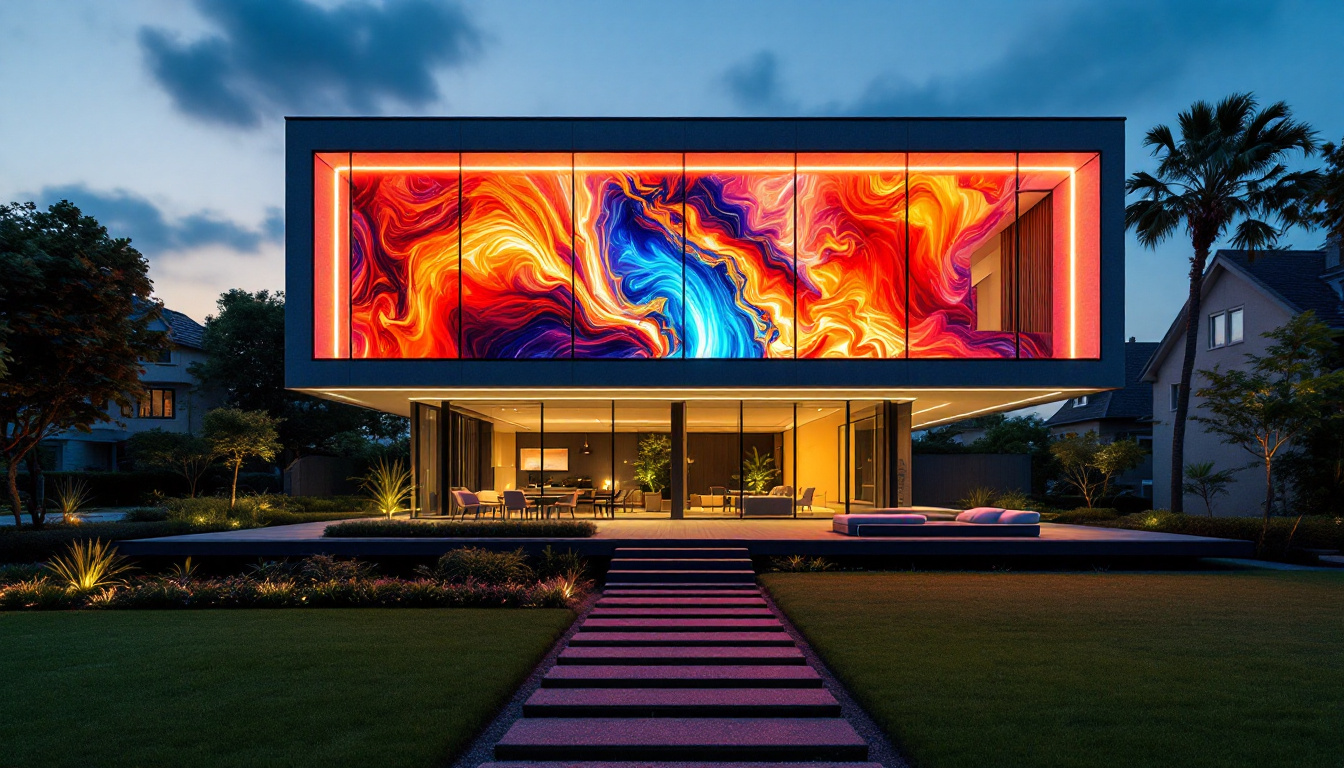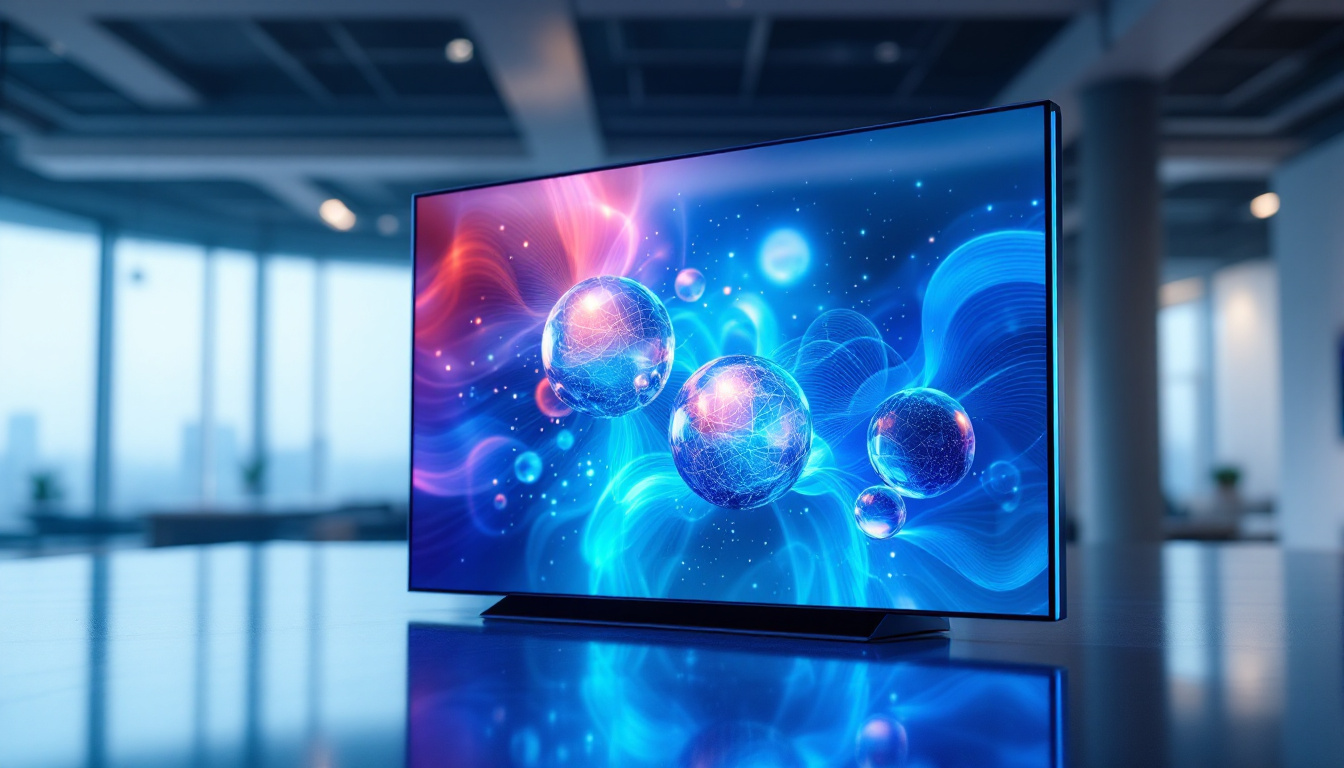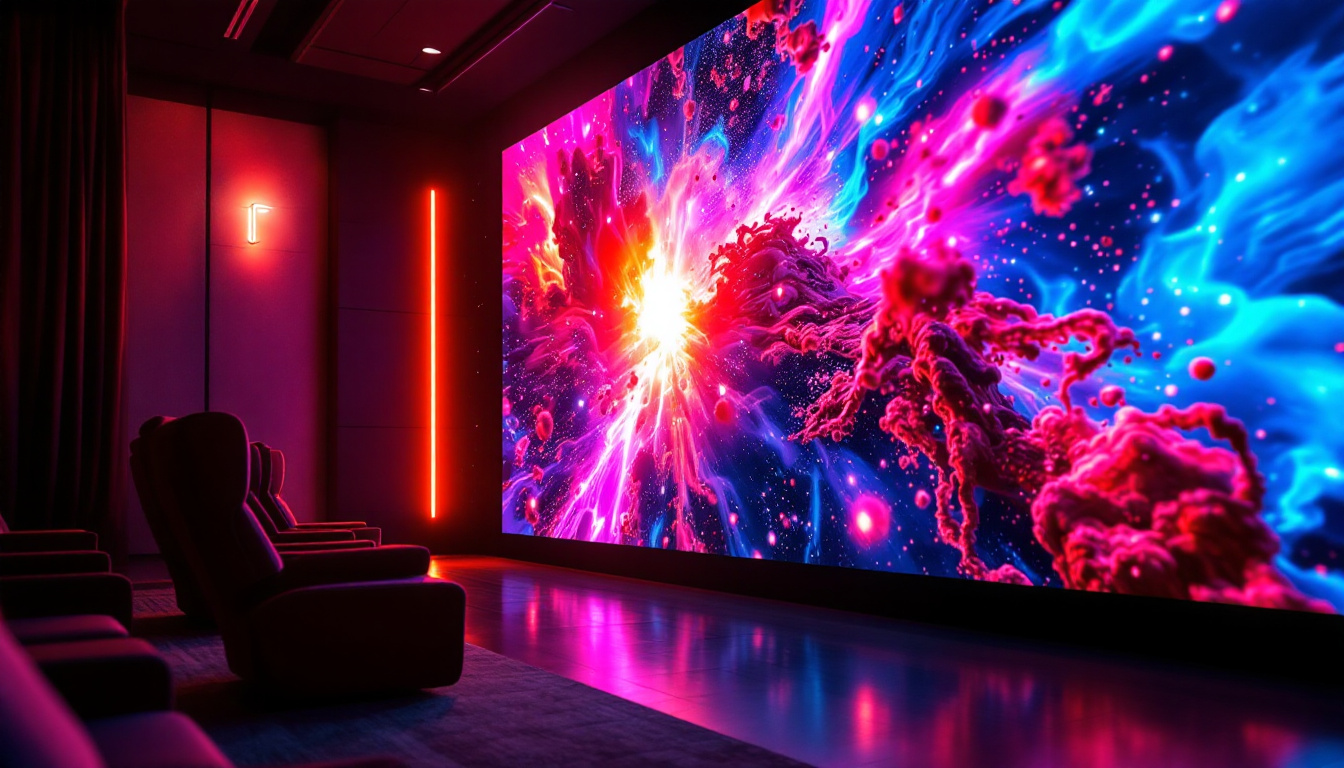In the realm of modern technology, the terms LCD and LED are frequently encountered, especially when discussing screens for televisions, monitors, and other devices. Understanding the differences and functionalities of these displays is crucial for consumers and tech enthusiasts alike. This article delves into the intricacies of LCD and LED displays, exploring their mechanisms, advantages, and applications.
Understanding LCD Technology
Liquid Crystal Display (LCD) technology has revolutionized the way visuals are presented. It utilizes liquid crystals sandwiched between two layers of glass or plastic. When an electric current passes through the liquid crystals, they align in a way that allows varying degrees of light to pass through, creating images. This technology is prevalent in various devices, including televisions, computer monitors, and smartphones. The development of LCD technology has not only enhanced the clarity and vibrancy of images but has also contributed to the sleek and lightweight designs of modern electronic devices, making them more portable and user-friendly.
The Components of LCD Displays
LCD displays consist of several key components that work together to produce images. The primary elements include:
- Liquid Crystals: These are the core of the display, providing the ability to manipulate light and create images.
- Backlight: Since LCDs do not emit light on their own, they require a backlight, typically made up of fluorescent lamps or LEDs, to illuminate the screen.
- Polarizers: These filters are essential for controlling the light that passes through the liquid crystals, ensuring that the desired colors and images are displayed accurately.
The combination of these components allows LCDs to produce sharp images with a wide range of colors. However, the quality of the display can vary significantly based on the materials and technology used in its construction. Additionally, advancements in LCD technology have led to innovations such as edge-lit and full-array backlighting, which further enhance brightness and contrast, providing a more immersive viewing experience. The ongoing research into improving the efficiency and longevity of these components continues to drive the evolution of LCD technology.
Types of LCD Displays
There are several types of LCD technologies, each with its own advantages and drawbacks:
- Twisted Nematic (TN): Known for its fast response times, TN panels are often used in gaming monitors. However, they typically have poorer color reproduction and viewing angles compared to other types.
- In-Plane Switching (IPS): IPS panels offer superior color accuracy and wider viewing angles, making them ideal for graphic design and professional applications. They tend to be more expensive than TN panels.
- Vertical Alignment (VA): VA panels provide excellent contrast ratios and deeper blacks, making them suitable for watching movies. However, they may have slower response times compared to TN and IPS displays.
In addition to these common types, there are also more specialized LCD technologies, such as Quantum Dot LCDs, which utilize quantum dots to enhance color performance, and Mini-LED LCDs, which offer improved local dimming capabilities for better contrast. Each of these variations caters to specific user needs, whether for gaming, professional design work, or home entertainment, showcasing the versatility and adaptability of LCD technology in meeting diverse consumer demands. As the market continues to evolve, manufacturers are constantly exploring new ways to enhance the performance and sustainability of LCD displays, paving the way for even more advanced visual technologies in the future.
Exploring LED Technology
Light Emitting Diode (LED) technology is often discussed in conjunction with LCDs, leading to some confusion. While LED refers to the light source used in displays, it is essential to understand how it enhances the LCD technology.
LED as a Backlight for LCDs
In traditional LCDs, the backlight is typically provided by fluorescent lamps. However, with the advent of LED technology, manufacturers began using LEDs as the primary light source. This innovation led to the development of LED-backlit LCDs, which offer several advantages:
- Improved Brightness: LED backlighting can produce brighter images, enhancing visibility in well-lit environments.
- Energy Efficiency: LEDs consume less power compared to traditional fluorescent lights, making LED-backlit displays more energy-efficient.
- Thinner Designs: LED technology allows for slimmer display designs, enabling manufacturers to create sleek and modern devices.
Full-Array vs. Edge-Lit LED
When it comes to LED-backlit LCDs, there are two primary configurations: full-array and edge-lit. Each has its own unique characteristics:
- Full-Array LED: In this setup, LEDs are distributed evenly behind the entire screen. This configuration allows for more precise control of brightness and contrast, resulting in better overall image quality.
- Edge-Lit LED: Here, LEDs are placed along the edges of the display, with light diffused across the screen. While this design allows for thinner screens, it may not provide the same level of brightness uniformity as full-array backlighting.
The Impact of Local Dimming
One of the most significant advancements in LED technology is the implementation of local dimming. This feature is primarily associated with full-array LED displays, where specific zones of the backlight can be dimmed or turned off independently. By doing so, local dimming enhances the contrast ratio and allows for deeper blacks, which is particularly beneficial for viewing dark scenes in movies or games. This capability not only improves the overall viewing experience but also contributes to more accurate color representation, making images appear more lifelike and immersive.
Future Trends in LED Technology
The future of LED technology looks promising, with ongoing research and development aimed at pushing the boundaries of display capabilities. Innovations such as MicroLED and MiniLED are gaining traction, offering even greater levels of brightness, color accuracy, and energy efficiency. MicroLED technology, in particular, is being hailed as a potential game-changer, as it allows for self-emissive pixels that can produce stunning visuals without the need for a backlight. As these technologies continue to evolve, we can expect to see even more remarkable advancements in how we experience visual content across various devices.
Comparing LCD and LED Displays
While LED technology enhances LCD displays, it is crucial to compare both technologies to understand their respective strengths and weaknesses better. This comparison can help consumers make informed decisions when purchasing screens.
Image Quality
Image quality is one of the most significant factors to consider when comparing LCD and LED displays. LED-backlit LCDs generally offer superior image quality due to their ability to produce brighter images and deeper blacks. The full-array LED configuration, in particular, excels in contrast and color accuracy. Additionally, many LED displays incorporate advanced technologies like HDR (High Dynamic Range), which further enhances the viewing experience by providing a wider range of colors and improved brightness levels. This means that viewers can enjoy more lifelike images, especially in scenes with high contrast, such as sunsets or dark shadows.
Energy Consumption
Energy efficiency is another critical consideration. LED-backlit displays consume less power than traditional LCDs with fluorescent backlighting. This efficiency not only reduces electricity bills but also contributes to a smaller carbon footprint, making LED displays a more environmentally friendly choice. Furthermore, as energy costs continue to rise, the long-term savings associated with LED technology can be significant. Many manufacturers are now focusing on creating more energy-efficient models, often featuring energy-saving modes that automatically adjust brightness based on ambient light conditions, further enhancing their appeal to eco-conscious consumers.
Cost Considerations
When it comes to pricing, traditional LCDs tend to be less expensive than their LED counterparts. However, the price difference has been decreasing as LED technology becomes more mainstream. Consumers should weigh the benefits of enhanced image quality and energy efficiency against the potential cost increase. It’s also worth noting that while the initial investment for LED displays might be higher, the longevity and durability of these screens often justify the price. LED displays typically have a longer lifespan and better resistance to burn-in, making them a more reliable choice for users who plan to use their screens for extended periods, such as gamers or professionals in creative fields.
Applications of LCD and LED Displays
Both LCD and LED displays are used in various applications, ranging from consumer electronics to professional environments. Understanding these applications can provide insight into the suitability of each technology for specific needs.
Consumer Electronics
LCD and LED displays are ubiquitous in consumer electronics. Televisions, smartphones, tablets, and laptops commonly utilize these technologies. The choice between LCD and LED often depends on the intended use, such as gaming, streaming, or professional work.
Commercial Use
In commercial settings, displays are used for advertising, information dissemination, and presentations. LED displays, particularly large-format screens, are favored for their brightness and visibility in various lighting conditions. LCDs are also used in office environments for monitors and digital signage.
Medical and Industrial Applications
In specialized fields such as medicine and manufacturing, high-quality displays are essential for accurate data representation. LCDs and LED displays are utilized in medical imaging, industrial monitoring, and control systems, where clarity and precision are paramount.
Future Trends in Display Technology
The display technology landscape is continually evolving, with advancements that promise to enhance user experiences further. Emerging trends include OLED (Organic Light Emitting Diode) technology, which offers even greater contrast and color accuracy than traditional LED displays.
MicroLED Technology
MicroLED is an exciting development in display technology, combining the best aspects of LCD and OLED. MicroLEDs are tiny, self-emissive LEDs that provide excellent brightness, color accuracy, and energy efficiency. This technology is still in its infancy but holds great promise for future displays.
Flexible Displays
Flexible display technology is another area of growth, allowing screens to bend and curve. This innovation could lead to new form factors for smartphones, tablets, and televisions, providing users with more versatile options.
Conclusion
Understanding the differences between LCD and LED displays is essential for anyone looking to purchase a new screen. While both technologies have their strengths, LED-backlit LCDs generally offer superior image quality, energy efficiency, and design flexibility. As technology continues to advance, consumers can expect even more innovative display solutions in the future.
Ultimately, the choice between LCD and LED will depend on individual needs and preferences. By considering factors such as image quality, energy consumption, and application, consumers can make informed decisions that suit their lifestyles and requirements.
Discover LumenMatrix’s Innovative LED Displays
Ready to elevate your visual experience with the latest in display technology? LumenMatrix offers a comprehensive range of LED display solutions tailored to meet your unique needs. From captivating Indoor LED Wall Displays to dynamic Outdoor LED Wall Displays, and from versatile Vehicle LED Displays to sleek LED Poster Displays, our products are designed to make your brand stand out. Embrace the future of visual communication with our LED Sports Displays, interactive Floor LED Displays, and customizable options that ensure your message resonates with clarity and impact. Don’t miss the opportunity to transform your space with our All-in-One LED Display and LED Transparent Display solutions. Check out LumenMatrix LED Display Solutions today and see how we can help you create unforgettable visual experiences.































